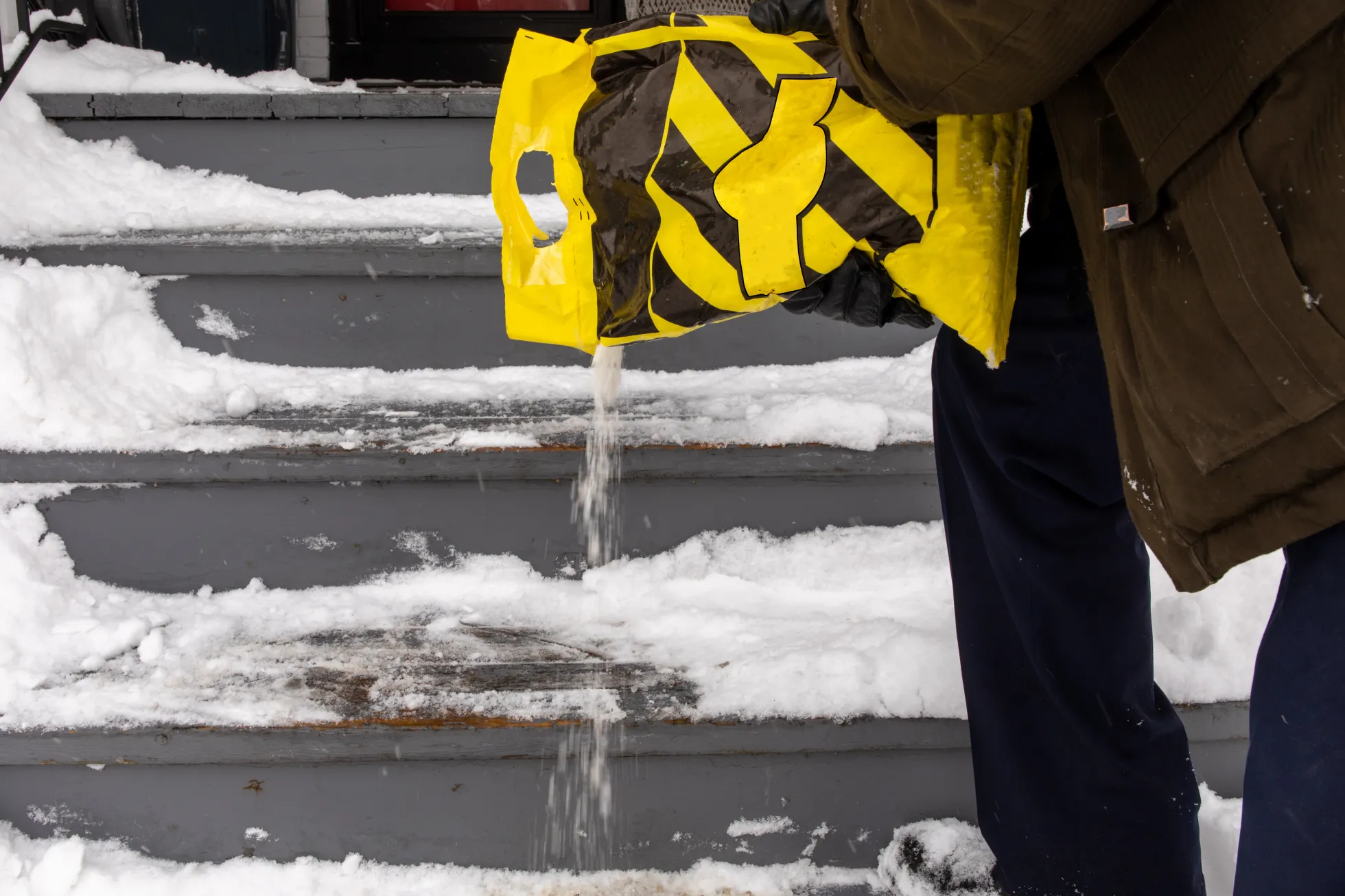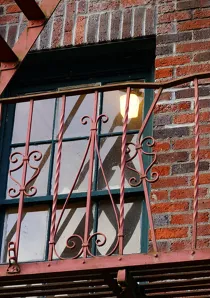Are you using the right de-icer for your property? Picking the wrong one could cost you thousands in repairs, harm your tenants, or even land you in legal trouble. Imagine this: a tenant slips on an untreated walkway and sues for medical expenses. Or, your entryway concrete starts cracking from overuse of rock salt, requiring a $3,000 repair.
Winter safety isn’t just about keeping walkways clear—it’s about choosing the right products to protect your property, tenants, and bottom line. In this guide, we’ll break down the best de-icing options, how to use them effectively, and why your choice of salt matters more than ever.
For a visual overview of de-icing products, download Domu's handy print-out at he bottom of this page. It’s a quick-reference guide to help you choose the best salt for your property.
Basic Salt De-Icers
Rock Salt (Sodium Chloride): The most common and cheapest option at $5-10 per 50lb bag, rock salt works down to 15°F. While it's cost-effective for large areas like parking lots, it's extremely corrosive to concrete and metal, can kill grass and plants, and is harsh on pet paws. Avoid it near building entrances and walkways where pets frequent. You'll often see it dyed pink or blue for visibility and coverage tracking.
Calcium Chloride: When temperatures plummet, calcium chloride shines – it works down to -25°F and acts faster than traditional rock salt. At $20-30 per 50lb bag, it's pricier but less damaging to concrete and more effective in smaller quantities. The downside is that it leaves a slippery residue if over-applied and can still irritate pet paws, though less than rock salt.
Magnesium Chloride: This mid-range option ($15-25 per 50lb bag) offers the best balance for most properties. It works to -15°F, causes minimal concrete damage, and is gentler on paws. Its residue is less slippery than calcium chloride, making it ideal for entryways and high-traffic areas. The main drawback is cost—it’s about twice the price of rock salt.
Professional Grade Blends
CMA (Calcium Magnesium Acetate): The environmentally conscious choice. CMA prevents snow particles from sticking to each other or the pavement rather than forming a brine. While expensive ($40-50 per 50lb bag) and only effective to 20°F, it’s completely non-corrosive to concrete and metal, making it perfect for newer concrete and premium building entrances. It’s the only option that biodegrades completely without harming vegetation or water sources.
Calcium Chloride/Magnesium Chloride Mix: Common in premium ice melters, this blend combines fast-acting calcium chloride that works down to -25°F with gentler magnesium chloride for reduced surface damage. Often dyed blue or green for visibility, they typically cost $25-35 per 50lb bag but require less product per application. These blends are ideal for high-traffic areas and main walkways.
Propylene Glycol Blends: The safest choice for pets, propylene glycol blends are non-toxic and won't irritate paws or cause illness if ingested in small amounts. These premium products work to about 15°F but come at a steep price, often $45-55 per 50lb bag. They’re ideal for properties with high pet populations or those marketing themselves as pet-friendly communities.
Natural and Eco-Friendly Alternatives
Urea-Based Products: Essentially specialized fertilizer pellets, urea-based de-icers work to 25°F and are safe if pets ingest small amounts. While pet-friendly, they can oversaturate soil with nitrogen and cost significantly more than traditional salt, around $30-40 per 50lb bag. Best used sparingly near building entrances and designated pet relief areas.
Sand: Natural and abundant, sand is an eco-friendly alternative to salt that property managers can spread over frozen areas. It provides traction without contributing chloride to Chicago waterways, and it won’t corrode the bottom of vehicles or sting pets’ paws when they walk over it. However, it can be tricky to stop sand from getting everywhere. Be mindful of this if you have delicate hardwood floors or areas where cleanup is difficult. Sand works best as a supplement to de-icers during extremely cold temperatures.
Beet Juice/Molasses: One novel approach to getting the most out of your salt stockpile is to treat it with another substance that lowers the freezing point of ice. You can make your salt super-powered by treating it with calcium chloride, or take a natural approach with fruit byproducts like beet juice. The sugars in beet juice help lower the freezing point, making it an effective and eco-friendly alternative. While this method requires preparation and can leave a residue, it’s an excellent DIY solution for landlords looking to reduce environmental impact.
Application Strategies for Chicago Winters
Chicago winters require a deliberate approach to de-icing. For entrances and pet-friendly areas, prioritize premium, non-toxic products like propylene glycol blends or urea-based de-icers. Use cost-effective rock salt in parking lots and large spaces, where its corrosiveness is less concerning. Additionally, keep sand or cat litter available for immediate traction needs during extreme cold when de-icers may underperform.
To maximize effectiveness, pre-treat high-risk areas such as walkways and driveways before storms. Always store de-icing products in sealed, moisture-proof containers to maintain their quality and prevent damage to surrounding surfaces.
Cost vs. Damage Comparisons
Opting for cheaper de-icers like rock salt may seem like a smart financial move, but the hidden costs of property damage can quickly add up. A single concrete repair near an entrance can cost anywhere from $1,000 to $3,000. In contrast, spending $200 per season on premium de-icers for that same area can prevent costly repairs and safeguard the integrity of the surface.
Premium de-icers not only protect concrete but also reduce harm to pets, landscaping, and nearby structures. Investing in higher-quality products may feel like an upfront expense, but it is a cost-effective decision that saves money, protects property, and ensures safer spaces for tenants and visitors. The cheapest option often ends up being the most expensive when long-term consequences are considered.
Want more winter property management tips? Visit our Landlord Resource Page to learn how to protect your property and keep your tenants safe this winter.




